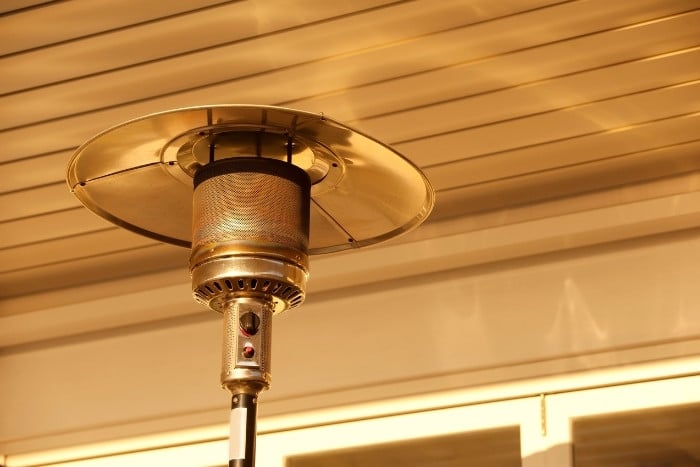You don’t want to forgo camping just because the snow is piling up and the winter winds are blowing. Campers with access to an RV often wonder whether it’s possible to sleep in these conditions in the winter. Can you sleep in an RV in the wintertime, or will it be too uncomfortable or unsafe?
You can sleep in an RV during the winter if you prepare for cold weather by checking for air leaks, installing RV skirting, adding antifreeze to your holding tanks, and disconnecting water and sewer hoses when not in use. A portable propane heater or a candle lantern can lend some extra warmth.
For more information on how you can go camping in your RV this winter, here’s what you should know to be more comfortable.
How to Make Sleeping in an RV in the Winter Comfortable?
Many campers hate the idea of giving up their favorite hobby and activity just because winter is approaching. Sleeping in an RV during the winter doesn’t have to be uncomfortable, though.
You can do many things to make it feel warmer, starting with the exterior and working your way inward. Sleeping in an RV in the winter without freezing is more than possible.
Many of the newer RVs on the market are insulated and designed to accommodate campers every season.
While it may not be ideal if you’re in an older camper, it’s possible to stay warm and toasty even when the temperatures drop. Here are a few ways to sleep in an RV comfortably in the winter.
1. Check the Exterior for Air Leaks
The first thing you’ll want to do if you plan to sleep in your RV during the winter is to ensure that you don’t have any air leaks.
The howling wind might find its way into your RV through the windows and doors, especially if you haven’t replaced weatherstripping.
Take some time to thoroughly survey your RV and feel around the windows and doors for spots where the cold air is coming in.
You can caulk these spots or remove old weatherstripping and add new stripping to keep some of the drafts from chilling you to the bone.
Another area where you’ll want to ensure that you have no air leaks is in your ceiling vents or skylights.
If caulking doesn’t do the trick to solve a very drafty ceiling vent, many manufacturers also make foam padding that you can use to line these areas.
Campers on a budget may be able to make their own from heavy-duty foam padding purchased at their local home improvement store.

2. RV Skirting
If you plan on staying in one location for most of the winter, it’s worth looking into RV skirting to keep cold air out from beneath your camper.
RV skirting extends from the bottom of the living portion of the camper all the way to the ground.
It keeps wind and snow from getting beneath the RV and transferring those cool temperatures to the interior.
You can purchase RV skirting that attaches to the bottom of the RV with snaps or make your own from insulated foam board or plywood.
Keep in mind that this might be quite an investment, so you should research to find the material and style that’s the right fit for you long-term. This is a must-have item if you do a lot of camping in the cold.
3. Add Antifreeze to Holding Tanks
One of the major concerns that you’ll be faced with when camping in your RV in the winter is the holding tanks.
If you don’t have skirting to keep the wind and snow out, these tanks are in a prime spot to freeze, leading to issues with your pipes and potentially even a busted tank.
The good news is that you can do a few things to minimize this risk. First, make sure to empty both tanks right before you head out on your camping excursion.
When liquids freeze, they take up more space. A full holding tank that freezes may have no choice but to burst open if it’s holding too much wastewater.
Next, you should have about one quart of RV antifreeze in both your black and gray water tanks. Once you add the antifreeze, you want to refrain from emptying your holding tanks until your trip is finished.
Emptying the tank will also rid it of the antifreeze, making the contents more likely to freeze. If you need to empty, pack some antifreeze in your RV to top them off.
4. Water Hookups
For those who plan to camp in their RV during the winter, you won’t want to be without water. The best way to ensure that your RV is cared for is to fill the water tank and disconnect the hose.
Otherwise, you risk the water freezing inside the hose and causing it to burst, similar to how the hold tanks may burst with freezing water.
Always allow hoses to drain fully before putting them up for the night. Otherwise, you may see some splits and holes in the hoses.
The same is also true of your sewer hose. During the winter, you might want to consider only attaching the sewer hose when it’s time to empty the tanks.
When finished, drain the hose and store it on the inside of your RV or somewhere it can be heavily insulated to prevent freezing and cracked hoses.
5. Space Heater
If you’ve taken care of all the other practicalities and are still concerned that you might not be warm enough for the winter weather, you can always purchase a small space heater.
Many of these heaters run on propane canisters, which can last you for several hours. They’re ideal for allowing you to drift off to sleep comfortably and warm up the RV first thing in the morning.
Make sure that you have a carbon monoxide detector aboard, though. Carbon monoxide from a propane heater is odorless and colorless, and CO poisoning can be fatal.
You may not notice the symptoms until it’s too late, so always be prepared with a monitor that can detect CO while using one of these systems.
When carbon monoxide is a concern, you might instead want to consider a candle lantern. Many of these use emergency candles that can burn for several hours and heat small areas.
Keep them close to your bedside, but not so close that they can get knocked over and start a fire. These are slightly safer options if you’re careful about their placement.

Final Thoughts
While it’s possible to sleep in an RV in the winter, there are several precautions you’ll need to take to make the most of your camping trip.
Monitoring for air leaks can help keep you warm for the winter, but you’ll also need to take precautions to prevent damage to the RV in freezing temperatures.
Following these guidelines, you’ll be better prepared to brave the ice and snow in your RV this winter.
